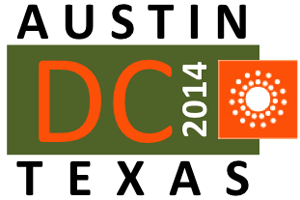Ceri Binding, for example, had investigated six different products to help with establishing mappings between vocabularies, without finding one that was fully satisfactory. The size of the LOD (Linked Open Data) cloud always impresses - 1048 datasets, 302 vocabularies, and the numbers grow all the time – but problems have been reported with at least 58% of the datasets, such as “503: unavailable” or “404: not found”, and Ceri observed big variations in the quality of the links. Successful Linked Data projects with sustained value for users are plainly less common than our wishful thinking supposes.
All the speakers were clear and straightforward. As usual at the NKOS Workshops, I was very impressed at the amount of knowledge and expertise assembled in the room. If only there was some way of sharing that accumulated experience with all those who struggle in isolation to handle thesaurus or taxonomy development!
The intimate atmosphere made it realistic to engage everyone in discussion. I took the opportunity to report on outcomes from a workshop held jointly by ISKO UK, DCMI and BCS IRSG on 23 June, on “Vocabularies and the Potential for Linkage”, and asked again what could be done about the need for more tools and training. Animated conversation followed, overflowing into the pub afterwards and continuing through to the concluding session next day.
It was hard to find practical, feasible solutions, partly because the community engaged in vocabulary mapping is quite small. Not only that, the term “vocabulary” has different meanings for different groups. The DCMI definition, for example, includes datasets and metadata schemas as well as controlled vocabularies used for subject indexing. This leads to a very wide range of skills and specializations. This diversity of topics and the distance that separates us from co-workers makes it unrealistic to set up affordable training days.
In the NKOS community, at least we can focus on KOSs (Knowledge Organization Systems) as the type of vocabulary to be linked (… though that still includes subject heading schemes, classification schemes, name authority lists and many taxonomies as well as thesauri.) That’s a useful focus for ISKO members too. If we can’t organize formal training sessions, at least we can make use of wiki space and perhaps other social media. In a wiki we could assemble all we know about tools and techniques – or at least pointers to where that knowledge can be found. Workshop participants left resolving to work together by email to make this happen. I shall report on progress via the ISKO-L and ISKO–UK lists.
Finally, remember - this workshop was small but beautiful. See the programme and all presentations at <https://at-web1.comp.glam.ac.uk/pages/research/hypermedia/nkos/nkos2014/programme.html>.
Stella Dextre Clarke
Chair, ISKO UK
 I attended this conference on 26th-27th June in London on behalf of ISKO UK, in place of Stella Dextre Clarke, who was unable to attend. The full programme of the meeting, with abstracts of papers is given on the
I attended this conference on 26th-27th June in London on behalf of ISKO UK, in place of Stella Dextre Clarke, who was unable to attend. The full programme of the meeting, with abstracts of papers is given on the 




